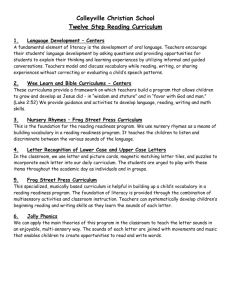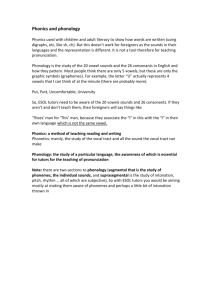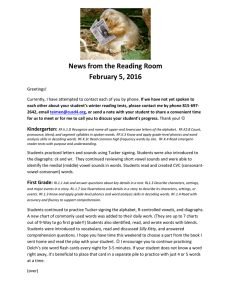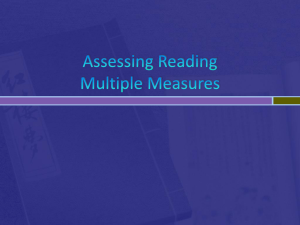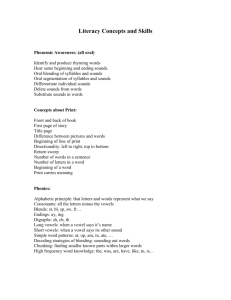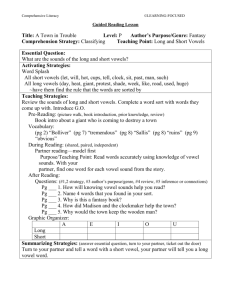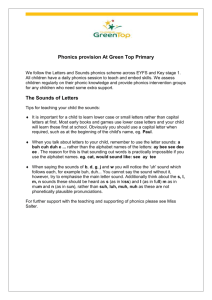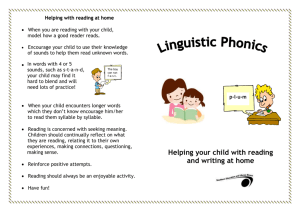Chapter 5- word recognition strategies
advertisement
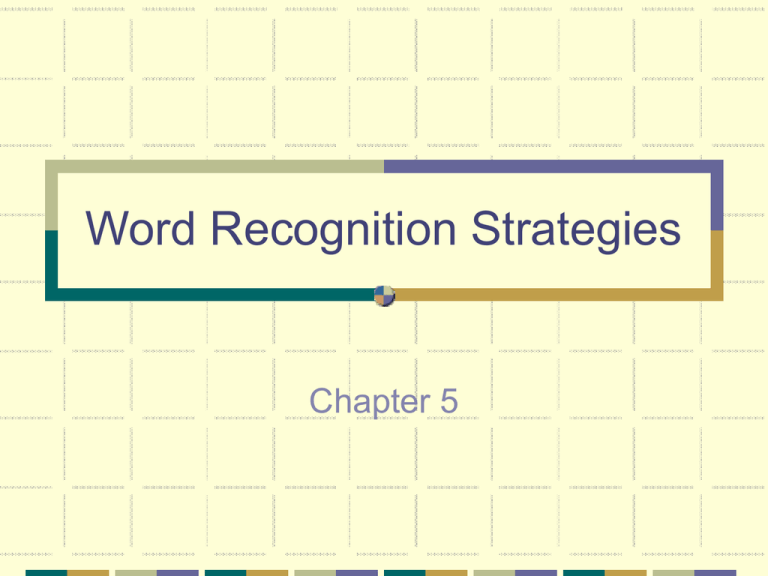
Word Recognition Strategies Chapter 5 3 ways to learn words Whole word-Look Say Structural analysis-Visual patterns and endings. Context analysis-What is the meaning in that sentence. Word recognition should be automatic. This helps with fluency. Sight Vocabulary Having a large sight word vocabulary helps unlock new words. Words are recognized instantly, analysis is minimal. Attention then is given to meaning Many high frequency words should be learned as units, because they are used so often in reading. Irregular words Should be learned as whole units: laugh, cough, might, right, light, could, should, would Teach whole words as a preview to guided reading. Teach the meanings as well. Students learn these words in experience stories, in read aloud predictable books, in narrative writings, labels on items, in picture dictionaries that they make and use. Position words These are learned as whole words: In, on, above, around, through, across, beside, among, under Use worksheets with pictures and directions: Put a purple circle around the tree. Student need varied practice on words such as there and their, where, were. Scrambled Sentences A good way to remember whole words. Write a sentence, copy it, cut it up and have students put it back in order. Use sentence strips with beginning words and finish the sentence with many different endings. I like to . . . take my dog for a walk • play at the playground, swim in the pool Phonics Important aspect of beginning reading. Primary grade teachers value and use this approach. Must be effective in promoting independent readers. Must be used in context with meaning. Sequence of phonics skills Discriminate speech sounds in words. Use written letters to represent the sounds. Identify the consonant in beginning and ending positions. Learn short vowels Blend the consonants; br, bl, sp, etc. Sequence of phonics skills Long vowels 2 vowels diagraphs together are long, e at the end makes a long vowel. Vowel diagraphs oo, ew, and diphthongs oi, oy; ou ow R controlled vowels: ar, er, or Final y take long e or long I sound Direct teaching of phonics Analytic phonics- Take a word and break it down into sounds. Most widely used. Inductive-examples of the pattern are given. Deductive-next time they see the word pattern they will know the sounds. Synthetic phonics- Beginning sounds, syllables, then words. Take word parts and combine them to make a words.
